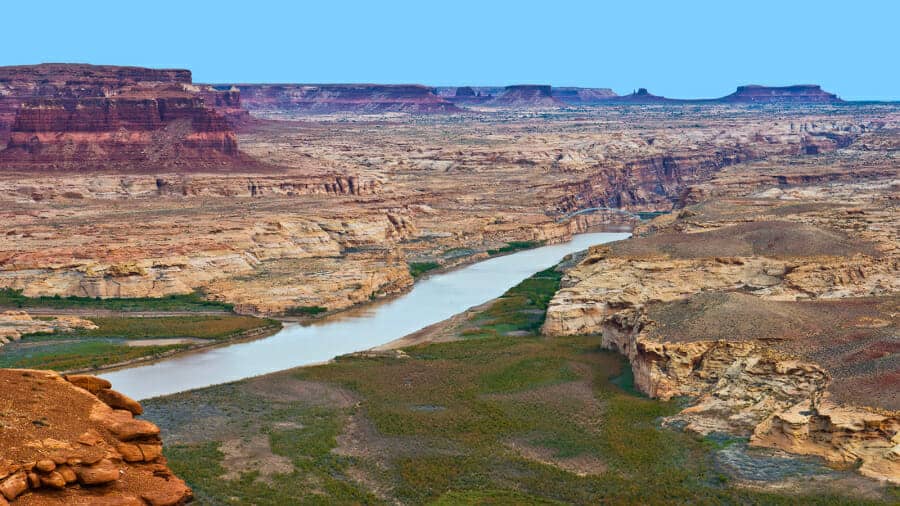

Education Images/UIG via Getty Images
Lake Mead is the country’s biggest reservoir of water. Think of it as the savings account for the entire Southwest. Right now, that savings account is nearly overdrawn.
For generations, we’ve been using too much of the Colorado River, the 300-foot-wide ribbon of water that carved the Grand Canyon, supplies Lake Mead, and serves as the main water source for much of the American West. The river sustains one in eight Americans — about 40 million people — and millions of acres of farmland. In the next 40 years, the region is expected to add at least 10 million more people, as the region’s rainfall becomes more erratic.
An especially dismal snowpack this past winter has forced a long-simmering dispute over water rights to the fore, one that splits people living above and below Lake Mead. It’s a messy, confusing situation, so here’s an overview of who’s involved and what’s at stake: Users of Colorado River water below Lake Mead — including the cities of Phoenix, Los Angeles, Las Vegas (collectively referred to as the “lower basin ”) — rely on the reservoir as a lifeline. The people in the lower basin […]
Full article: The water war that will decide the fate of 1 in 8 Americans
Texas-New Mexico water fight could be impacted by SCOTUS ruling
What you don’t know about the water law that saved Arizona
US Supreme Court: Washington must remove barriers to salmon migration
Hirst decision protects salmon and water rights for farmers, tribes
Clean water is essential for life, yet millions of Americans unknowingly consume contaminants through their…
Human brains contain higher concentrations of microplastics than other organs, according to a new study, and the…
From the Office of the Governor: In anticipation of a multi-day, significant atmospheric river in Northern California,…
From Governor Newsom: Scientists, water managers, state leaders, and experts throughout the state are calling…
Photo: A harmful algal bloom in Milford Lake, Kansas, made the water appear bright green.…
An expanded plastic foam coffee cup is at a donut shop in Monterey Park, California.…